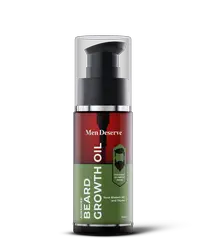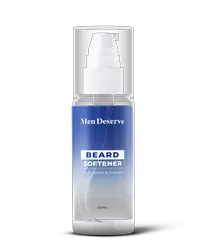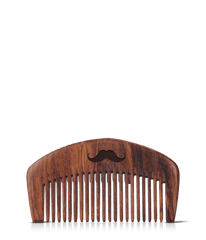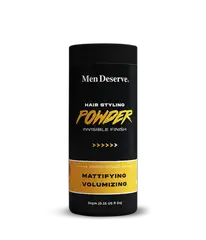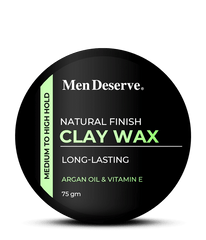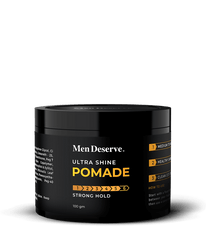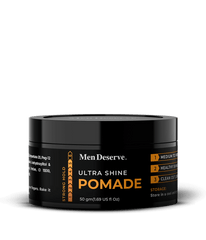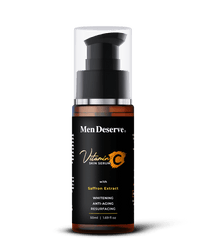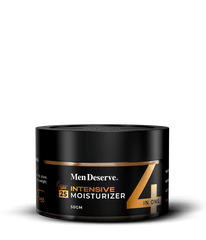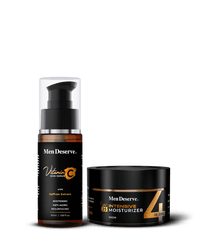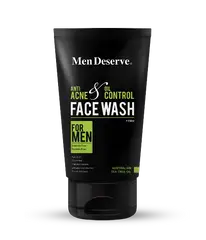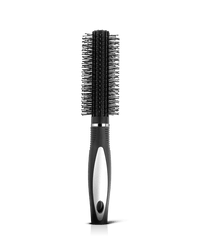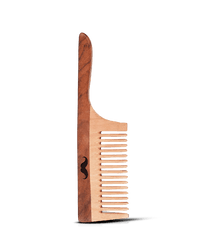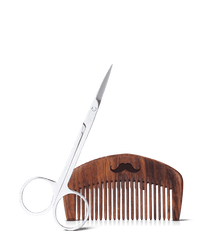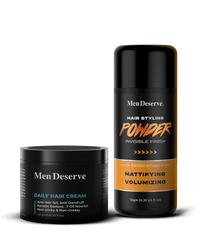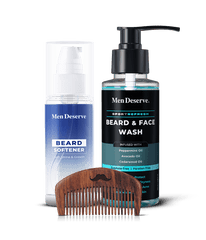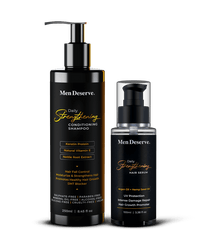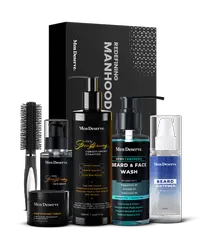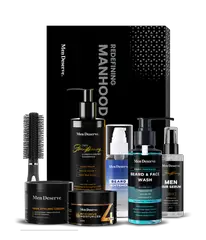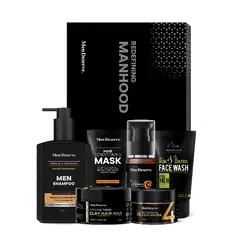Acne in Men
Acne is one of the most prevalent dermatological conditions worldwide, affecting nearly 85% of individuals between the ages of 12 and 30 at some point in their lives. Although acne is often perceived as a teenage problem, a significant number of adult men continue to suffer from it well into their 30s, 40s and beyond. For many men, acne is not only a cosmetic issue but also a psychological and emotional burden, impacting confidence, self esteem and even professional or social interactions.
Men tend to experience acne differently from women, both in presentation and severity, due largely to hormonal influences, skin structure and lifestyle factors. Understanding the biology of acne, its triggers and effective treatment options can help men manage this condition more effectively and prevent long term scarring.
What Exactly Is Acne?
Acne vulgaris, commonly known as acne, is a chronic inflammatory disease of the pilosebaceous units, which are composed of a hair follicle and its associated sebaceous (oil) gland. The primary mechanism behind acne formation involves a combination of excess sebum production, clogging of pores with dead skin cells, bacterial growth and inflammation.
When these factors converge, the result is the formation of comedones (blackheads and whiteheads), papules, pustules, nodules or cysts. These lesions can appear singly or in clusters, often leading to discomfort, redness and in severe cases, permanent scars.
Why Acne in Men Differs from Women’s Acne?
Men and women experience acne differently due to variations in hormonal composition, skin physiology and grooming habits.
1. Hormonal Factors
The most significant difference stems from the higher levels of androgens, especially testosterone, in men. These hormones stimulate the sebaceous glands to produce more sebum, the natural oil that lubricates the skin. Excessive sebum can clog pores, trapping bacteria and dead skin cells, thus initiating acne formation.
Unlike in women, where acne often fluctuates with the menstrual cycle, male acne tends to be constant and persistent, especially in adulthood.
2. Thicker and Oilier Skin
Men’s skin is about 20 to 25% thicker than women’s and has more active sebaceous glands. This results in a higher baseline oil production, which, while beneficial for hydration and protection, also increases the risk of clogged pores and bacterial overgrowth.
3. Facial Hair and Shaving Practices
Shaving can be a double edged sword for men. While it exfoliates the skin and removes dead cells, it can also cause microtrauma, irritation and ingrown hairs, all of which can exacerbate or mimic acne. The condition known as pseudofolliculitis barbae; a common problem among men with curly or coarse hair; often appears as small, inflamed bumps resembling acne.
4. Lifestyle and Occupational Factors
Men’s acne can be aggravated by certain environmental exposures and lifestyle habits, such as:
- Heavy sweating during workouts or labor intensive jobs.
- Wearing tight clothing, helmets or backpacks that cause friction (a condition called acne mechanica).
- Using oil based skincare, beard oils or hair pomades that block pores (known as pomade acne).
Types of Acne in Men
1. Comedonal Acne in Men

Comedonal acne in men is one of the mildest and most common types, characterized by blackheads (open comedones) and whiteheads (closed comedones). It develops when hair follicles become clogged with excess sebum, dirt and dead skin cells. This form of acne typically affects the forehead, nose and chin, leading to a rough or uneven skin texture. Maintaining a consistent cleansing routine and using non comedogenic skincare products can help prevent these blockages and control acne in men.
2. Inflammatory Acne in Men

Inflammatory acne in men appears as red, swollen pimples (papules) and pus filled bumps (pustules). It occurs when blocked pores become infected with Cutibacterium acnes bacteria, triggering inflammation and discomfort. This type of acne commonly affects the cheeks, jawline, shoulders and upper back. Because of the body’s strong immune response, these pimples can be painful and slow to heal. Effective treatments for inflammatory acne in men include topical antibiotics, benzoyl peroxide and anti inflammatory skincare products.
3. Nodulocystic Acne in Men

Nodulocystic acne in men is the most severe and deep rooted form of the condition. It involves large, painful nodules or cysts that develop beneath the skin’s surface. This type of acne often results in permanent scarring if left untreated. It’s frequently seen in adult men, as elevated testosterone levels can overstimulate sebaceous glands and lead to excessive oil production. Managing nodulocystic acne in men often requires professional care, including oral isotretinoin or in office dermatological treatments to prevent scarring and long term damage.
4. Body Acne in Men (Back and Chest Acne)

Body acne in men, especially on the back, shoulders and chest; is a common issue linked to sweating, friction and hormonal activity. Tight clothing, gym workouts and heat can trap sweat and oil against the skin, causing clogged pores and inflammation. This type of acne is sometimes referred to as “bacne.” To prevent and manage body acne in men, it’s important to shower after exercise, wear breathable fabrics and use gentle exfoliating cleansers that help remove dead skin and excess oil.
5. Acne Mechanica in Men

Acne mechanica in men is triggered by pressure, friction or heat on the skin. It often occurs in areas where tight clothing, helmets or sports gear rub against the body. Common among athletes, soldiers and active men, this type of acne appears as small bumps or pustules that can worsen with sweat and irritation. Preventing acne mechanica in men involves wearing moisture wicking fabrics, minimizing prolonged pressure on the skin and cleansing promptly after physical activity.
Root Causes of Acne in Men
While genetics and hormones lay the foundation, several external and internal factors can worsen acne in men:
1. Hormonal Fluctuations
Increased androgen levels, whether due to puberty, intense workouts or medical conditions, can significantly boost sebum production.
2. Genetics
If close family members suffered from severe acne, the likelihood of developing it increases. Genetics influence sebum production rates, skin sensitivity and inflammatory response.
3. Diet and Nutrition
Research increasingly links high glycemic foods, dairy products and processed foods to acne flare ups. Foods high in sugar and refined carbohydrates may spike insulin levels, leading to hormonal changes that promote oil production.
Conversely, diets rich in omega 3 fatty acids, antioxidants and vitamins A, E and zinc can support clearer skin.
4. Stress
Chronic stress triggers the release of cortisol, which increases oil production and inflammation, thereby worsening acne outbreaks.
5. Medications and Supplements
Certain drugs and supplements; such as anabolic steroids, testosterone boosters, lithium and corticosteroids can induce or aggravate acne.
6. Hygiene and Skincare Habits
Over washing, scrubbing aggressively or using harsh cleansers can strip the skin’s natural barrier, leading to irritation and rebound oil production. Similarly, using comedogenic (pore clogging) products can contribute to breakouts.
Diagnosis and Medical Evaluation
Dermatologists typically diagnose acne through a clinical examination of the skin. In severe or unusual cases, they may conduct:
- Hormonal blood tests (if endocrine imbalance is suspected).
- Bacterial cultures (for resistant infections).
- Medical history reviews (to identify medication or lifestyle triggers).
Identifying the type, severity and underlying cause is crucial for selecting the right treatment plan.
Treatment Options for Acne in Men
1. Over the Counter (OTC) Treatments
For mild to moderate acne, non prescription products can be effective:
- Benzoyl Peroxide (2.5 to 10%): Kills acne causing bacteria and reduces inflammation.
- Salicylic Acid (0.5 to 2%): Helps exfoliate the skin and unclog pores.
- Adapalene (0.1 to 0.3%): A retinoid that promotes cell turnover and prevents blockages.
- Niacinamide: Reduces inflammation and supports skin repair.
Men should opt for oil free, non comedogenic formulations suitable for their skin type.
2. Prescription Treatments
If OTC treatments fail, dermatologists may prescribe:
- Topical Retinoids (Tretinoin, Tazarotene): Improve cell turnover and reduce comedone formation.
- Topical or Oral Antibiotics (Clindamycin, Doxycycline): Control bacterial growth and reduce inflammation.
- Oral Isotretinoin (Accutane): A powerful option for severe or cystic acne; significantly reduces sebum production but requires strict medical supervision due to potential side effects.
- Hormonal Modulators: In rare cases, medications that influence androgen activity may be used in men under careful monitoring.
3. Professional Dermatological Procedures
To complement topical and oral therapies, dermatologists may perform:
- Chemical Peels: Exfoliate and remove dead cells while minimizing post inflammatory marks.
- Laser and Light Therapies: Kill acne causing bacteria and reduce sebaceous gland activity.
- Microneedling: Stimulates collagen production to reduce acne scars.
- Photodynamic Therapy: Targets sebaceous glands using light sensitive compounds to prevent recurrence.
Daily Skincare Routine for Acne in Men
Maintaining a consistent, well balanced skincare routine is essential for men dealing with acne. A targeted regimen not only helps prevent new breakouts but also supports skin healing and improves overall texture. Here’s a detailed routine every man with acne prone skin should follow:
1. Cleansing

Start and end your day by washing your face with a gentle, pH balanced cleanser. This helps remove excess oil, dirt and sweat that can clog pores throughout the day. Avoid harsh soaps or scrubbing too vigorously, as this can strip the skin’s natural barrier and trigger more oil production.
2. Exfoliating

Exfoliation helps clear dead skin cells that can block pores and contribute to acne. Use a chemical exfoliant containing mild acids like salicylic acid or glycolic acid once or twice a week. These ingredients dissolve debris within the pores and promote smoother, clearer skin. Over exfoliating can irritate the skin, so moderation is key.
3. Treatment Application

After cleansing (and exfoliating, if applicable), apply your prescribed acne treatments such as benzoyl peroxide, topical retinoids or antibiotic creams. Always follow your dermatologist’s instructions and avoid layering multiple active ingredients unless advised, as this can lead to dryness or irritation.
4. Moisturizing

Even oily or acne prone skin needs proper hydration. Use a lightweight, non comedogenic moisturizer to keep the skin barrier healthy and balanced. Look for ingredients like hyaluronic acid, niacinamide or ceramides, which soothe inflammation and prevent dryness caused by acne medications.
5. Sun Protection

Never skip sunscreen; UV rays can worsen acne marks and slow down healing. Apply a broad spectrum SPF 30 or higher daily, even on cloudy days. Choose a matte, oil free or gel based sunscreen that won’t clog pores or cause shine.
6. Shaving Care

Shaving can irritate acne prone skin, so take extra care. Always use a clean, sharp razor and shave in the direction of hair growth to reduce ingrown hairs and razor bumps. Opt for non irritating shaving gels or creams with soothing ingredients like aloe vera or chamomile and rinse with cool water afterward.
A well planned skincare routine tailored for acne prone skin can make a noticeable difference in clarity, comfort and confidence. Consistency, gentle products and dermatologist guidance are the foundations of long term clear skin for men.
Also Read: Skincare Routine for Men
Lifestyle Modifications for Clearer Skin
Managing acne in men isn’t just about medications or skincare products; it also requires consistent lifestyle changes that support healthy skin from the inside out. By improving diet, managing stress and maintaining proper hygiene, men can significantly reduce breakouts and promote clearer, healthier skin in the long run.
1. Dietary Balance

Diet plays a crucial role in controlling acne in men. High glycemic foods, sugary snacks and excessive dairy can increase insulin and androgen levels, stimulating oil production and inflammation. Focus instead on nutrient rich meals filled with vegetables, fruits, lean proteins and omega 3 fatty acids from sources like salmon, walnuts and flaxseeds. These help reduce inflammation and keep skin balanced.
2. Stress Management

Chronic stress can worsen acne in men by elevating cortisol levels, which in turn trigger excess sebum production and breakouts. Incorporate daily stress relief activities such as meditation, yoga, regular exercise or simple deep breathing exercises. Even short mindfulness sessions throughout the day can help restore hormonal balance and promote clearer skin.
3. Sleep Hygiene

Poor sleep can disrupt hormonal balance and slow down skin regeneration, worsening acne in men. Aim for 7 to 9 hours of quality sleep each night to allow the skin to repair and renew. Maintaining a consistent sleep schedule, avoiding caffeine late in the day and limiting screen time before bed can improve overall skin health and reduce breakouts.
4. Hydration

Proper hydration supports detoxification and helps the skin maintain elasticity and balance. Drinking at least 2 to 3 liters of water daily flushes out toxins and prevents skin from becoming overly dry or oily; two common triggers of acne in men. Hydrated skin also heals faster and looks more radiant.
5. Post Workout Hygiene

For active individuals, post exercise hygiene is essential in preventing acne in men, especially on the back, chest and shoulders. Sweat mixed with dirt and bacteria can clog pores, leading to body acne. Always shower immediately after workouts using a gentle cleanser and wear clean, breathable clothing to keep skin fresh and breakout free.
Acne Scarring in Men
Due to the deeper nature of male acne lesions, men are more prone to atrophic (indented) or hypertrophic (raised) scars. Treatments for scarring include:
- Fractional Laser Resurfacing
- Microneedling with PRP (Platelet Rich Plasma)
- Chemical Peels
- Subcision (for deep scars)
Early intervention during active acne stages can prevent scarring and pigmentation issues.
Psychological and Emotional Impact
Acne in men is often under discussed, but it can have profound psychological effects. Studies show that men with chronic acne report higher rates of social withdrawal, anxiety and reduced confidence. Addressing acne early is not just a dermatological priority; it is also a mental health one.
When to Seek Professional Help
Men should consult a dermatologist if:
- Acne is painful, cystic or scarring.
- Breakouts persist despite months of OTC treatments.
- Acne affects self esteem or quality of life.
- There are signs of infection or worsening inflammation.
Timely medical evaluation can prevent complications and permanent skin damage.
Final Thoughts
Acne in men is a multifaceted condition influenced by hormones, genetics, lifestyle and skincare habits. While it can be frustrating, it is also highly treatable with the right combination of professional care, consistent skincare and healthy living.
By understanding the biological roots of acne and adopting a tailored approach, men can achieve not only clearer skin but also greater confidence and overall well being. Clear skin is not just about appearance; it reflects internal balance, self discipline and care.
FAQs: Acne in Men
1. What are the main causes of acne in men?
The main causes of acne in men are hormonal fluctuations, excess oil production, clogged pores and bacterial buildup. High testosterone levels stimulate sebaceous glands, producing more sebum that blocks pores. Other factors include genetics, stress, poor skincare, diet and friction from clothing or shaving.
2. How to treat men's acne?
Acne in men can be treated with a consistent skincare routine and dermatologist recommended products. Mild acne responds to topical treatments like benzoyl peroxide or salicylic acid, while moderate to severe cases may need oral antibiotics or isotretinoin. Healthy habits; balanced diet, stress control and good hygiene; also support clearer skin.
3. How to 100% remove acne?
There’s no guaranteed way to 100% remove acne in men, but it can be controlled effectively. Professional treatments like isotretinoin, chemical peels or laser therapy can clear skin and reduce recurrence. Consistent skincare and medical supervision help achieve long term results.
4. What does testosterone acne look like?
Testosterone acne in men appears as deep, inflamed pimples on oily areas like the jawline, back and shoulders. It may include cysts or nodules that are painful and long lasting, often caused by high androgen levels or steroid use.
5. What are 5 causes of acne?
The top five causes of acne in men are:
- Hormonal imbalance
- Excess oil production
- Bacteria buildup
- Dead skin clogging pores
- Stress and poor lifestyle habits
6. Does acne mean high testosterone?
Not always. Acne in men may be linked to how sensitive the skin is to testosterone rather than high levels themselves. Even normal hormone levels can trigger excess oil production and breakouts.
7. Does acne in men go away?
Yes, acne in men often improves with age or treatment. However, some men continue to experience breakouts due to hormones, stress or lifestyle triggers. Regular skincare and dermatologist guidance help keep it under control.
8. What blood tests are done for acne?
For hormonal acne in men, doctors may suggest tests like testosterone, DHT, DHEA-S, cortisol and insulin levels. These help detect hormone or metabolic imbalances contributing to breakouts.






